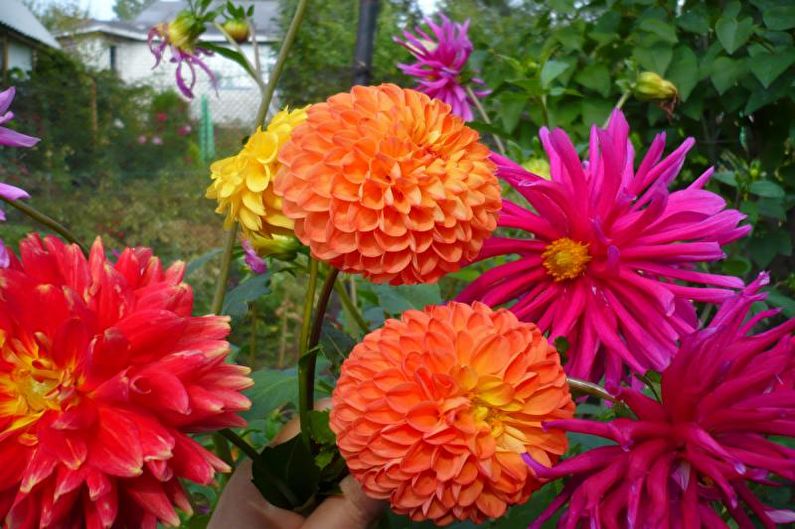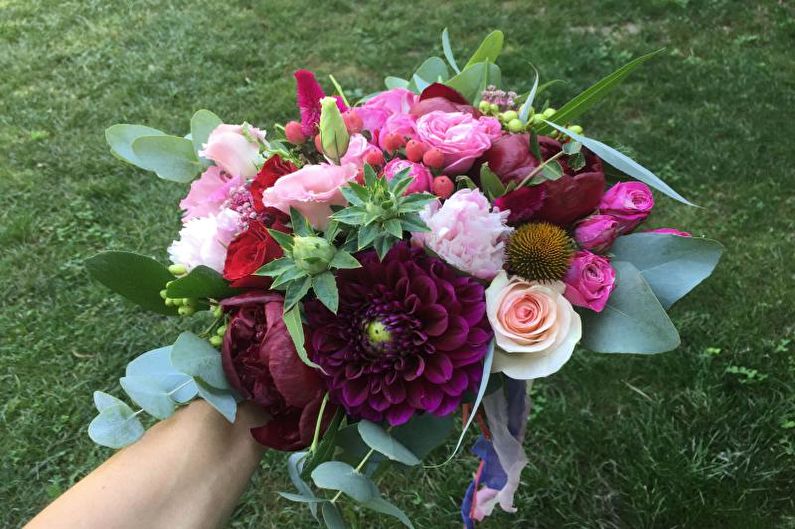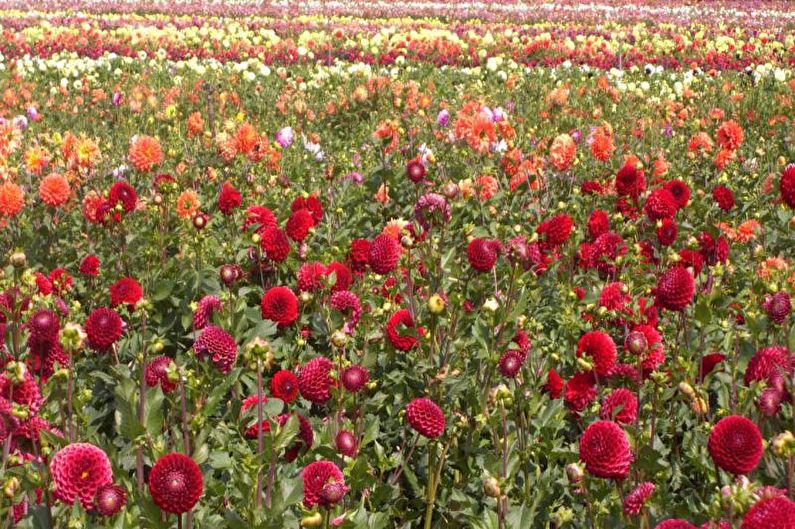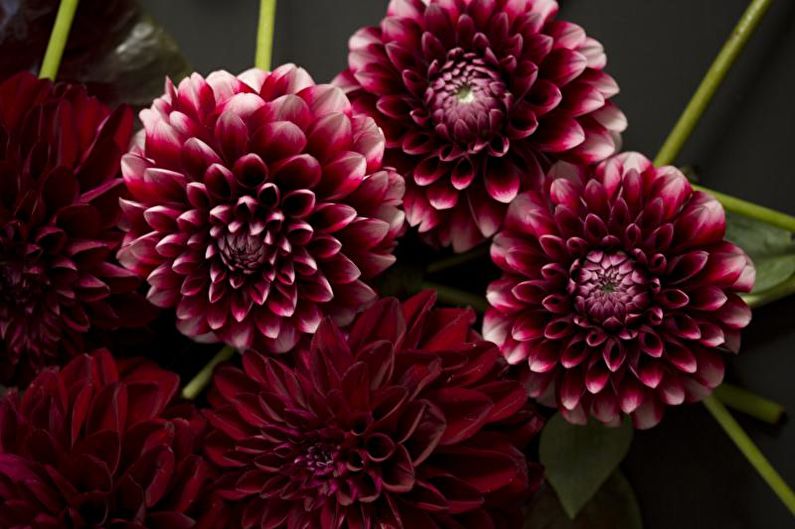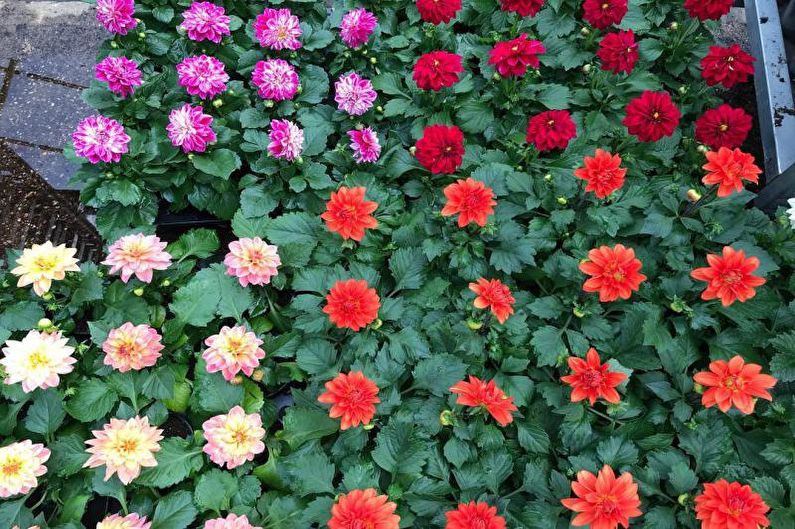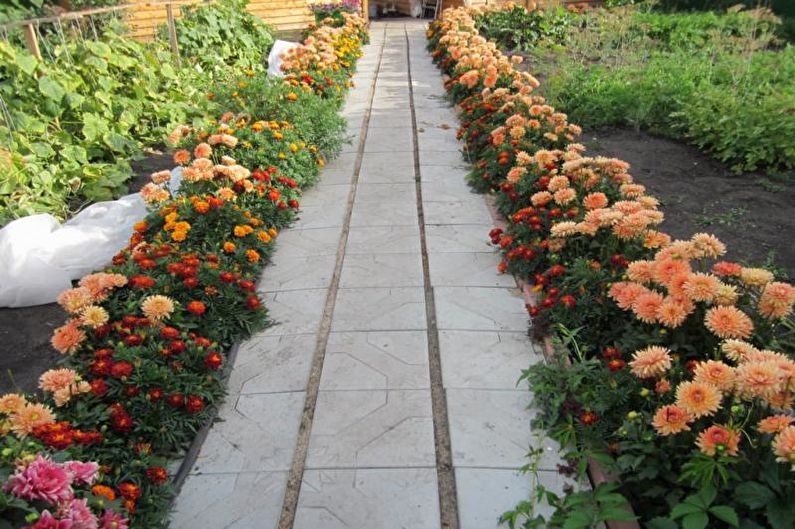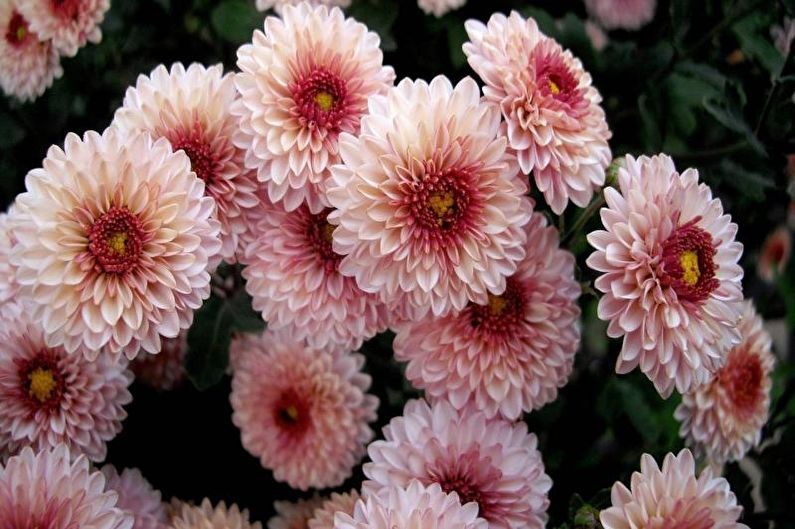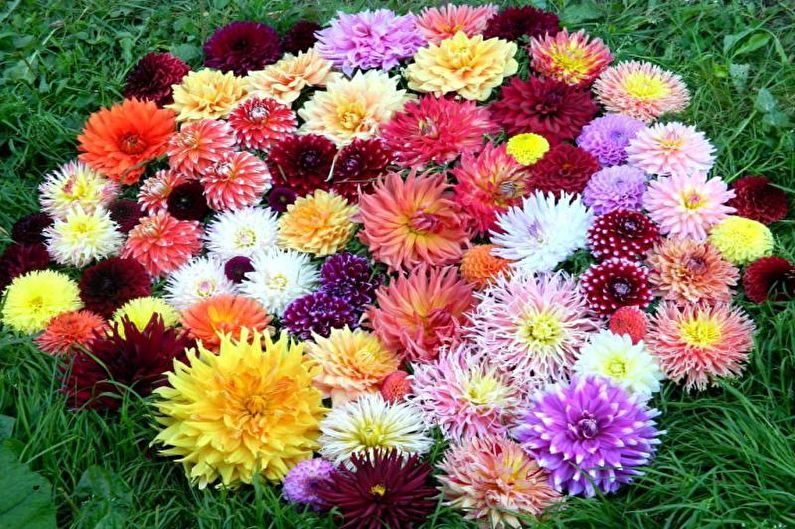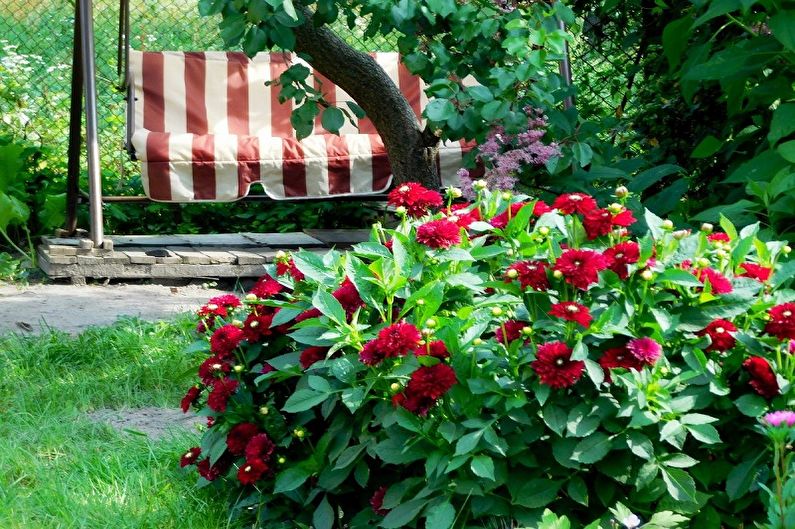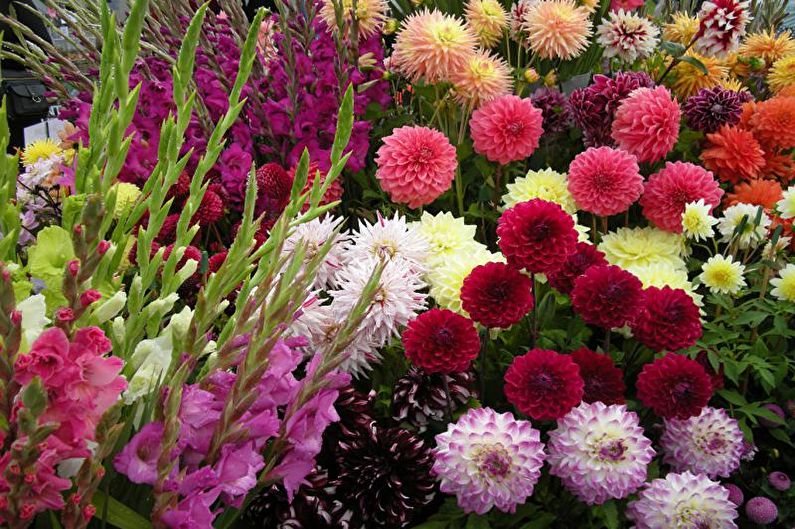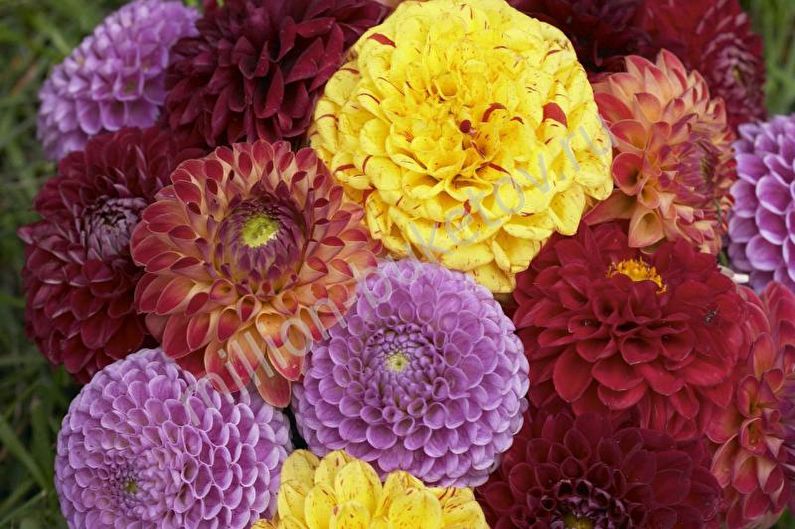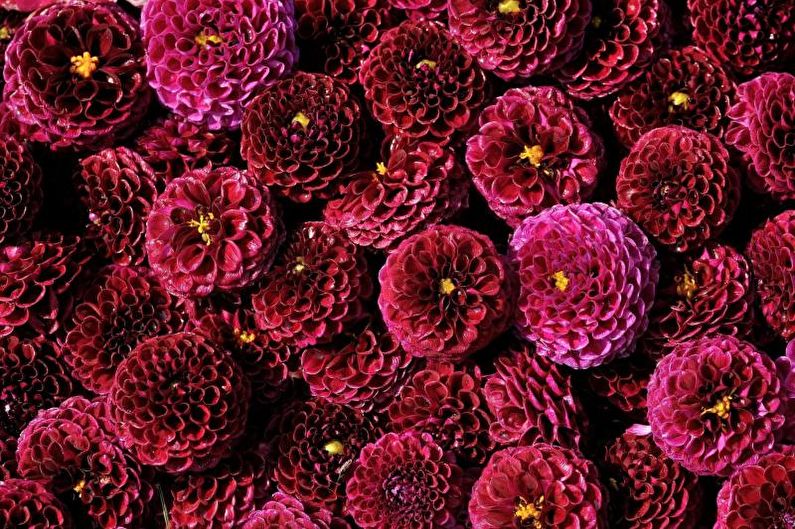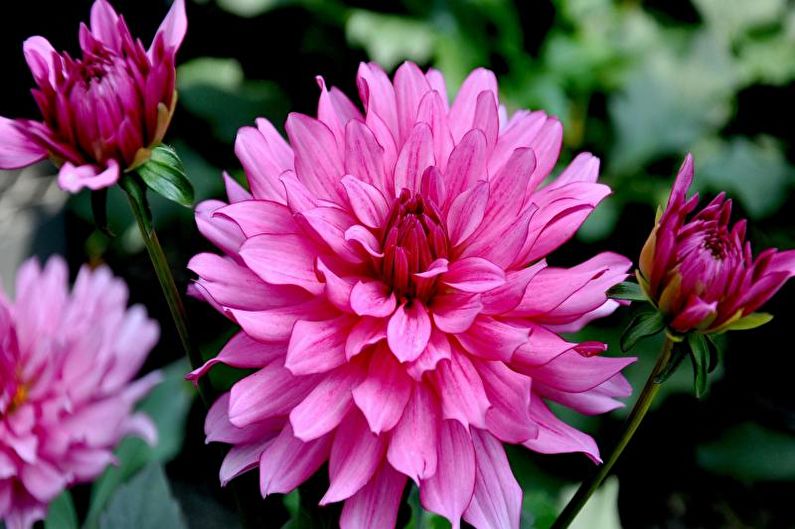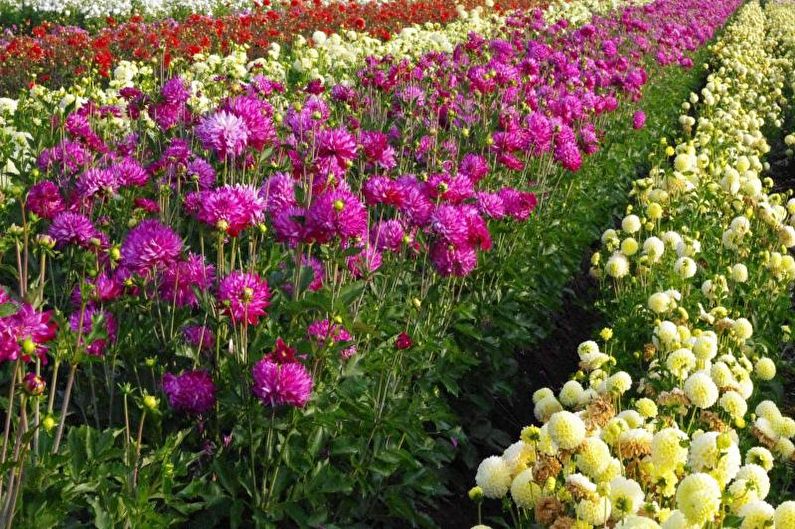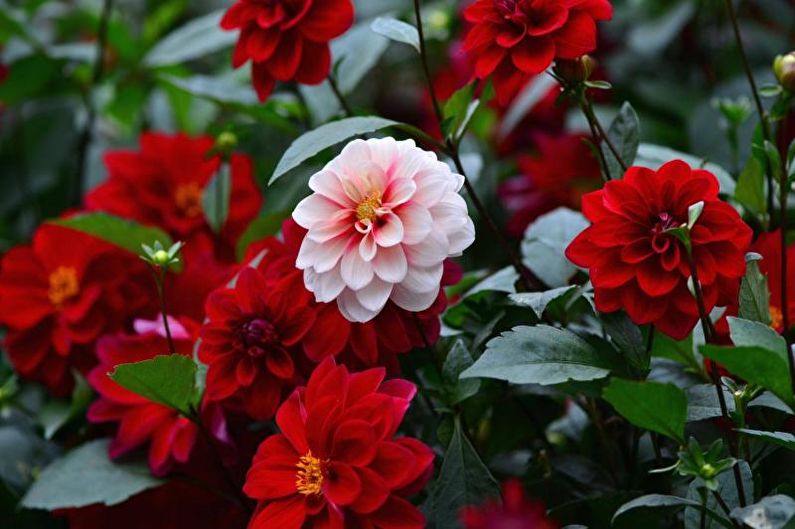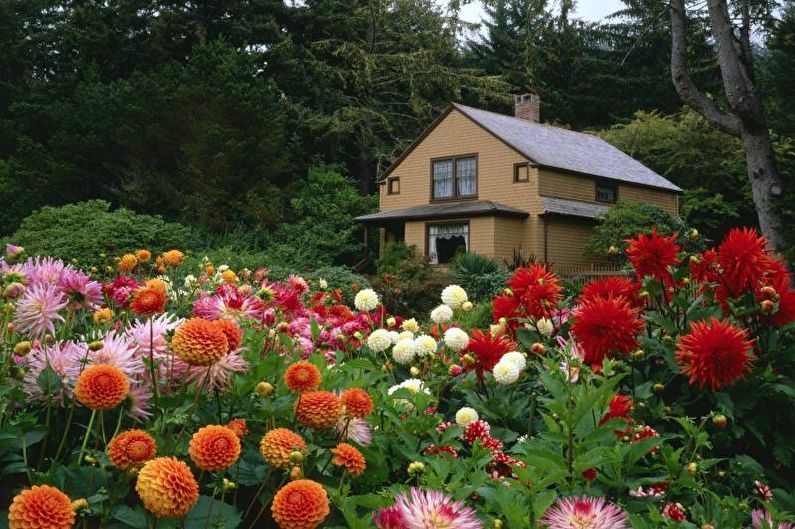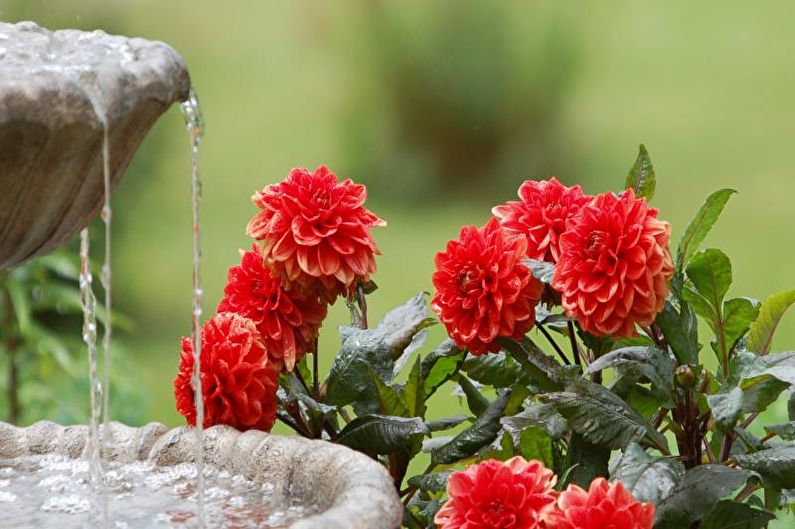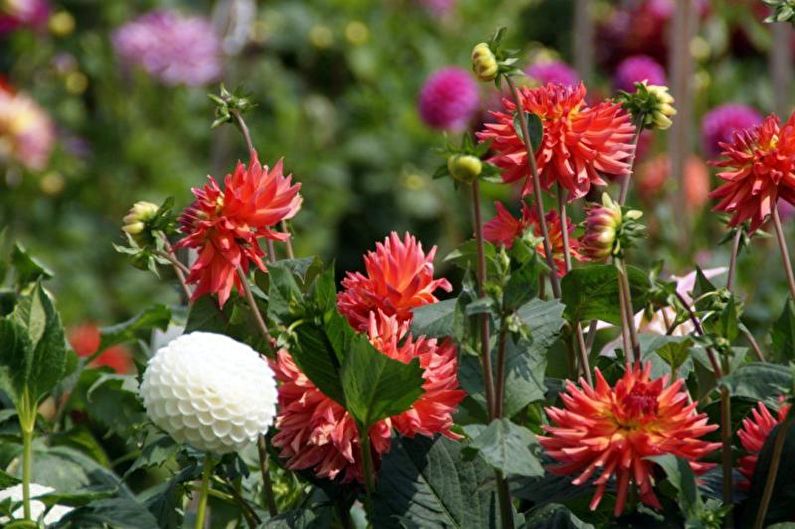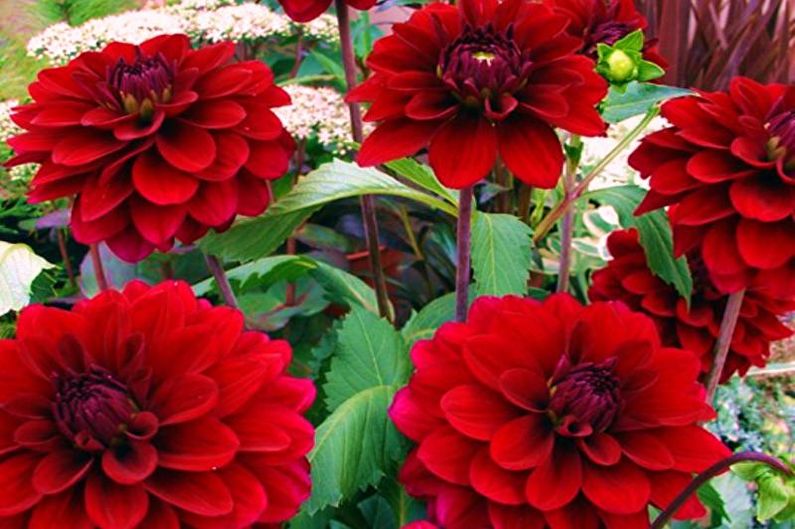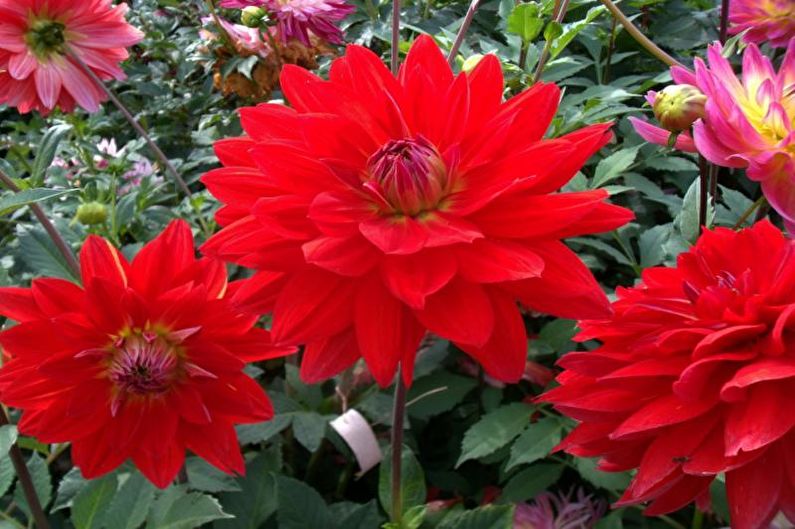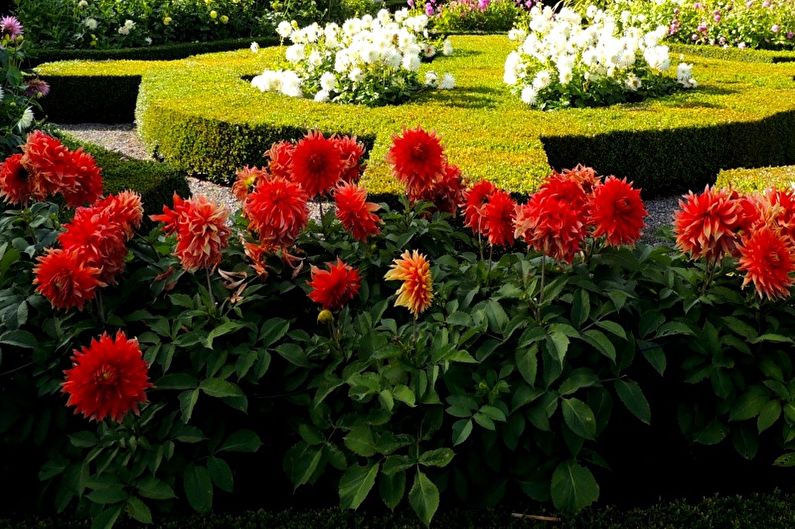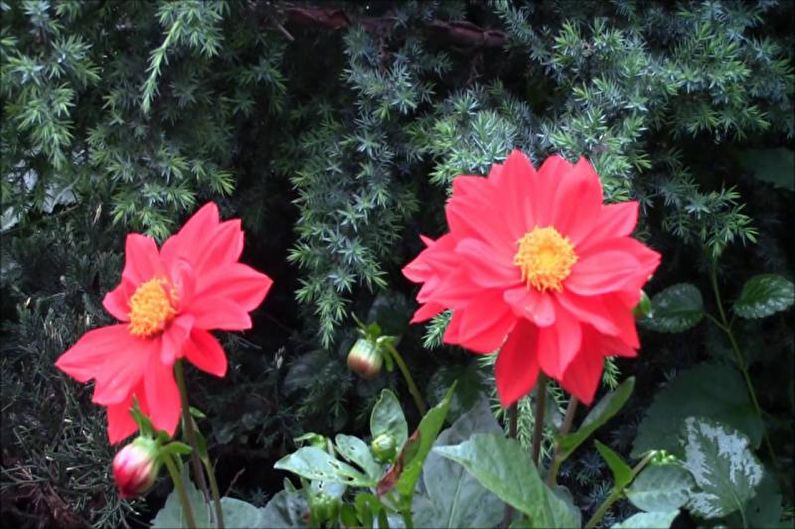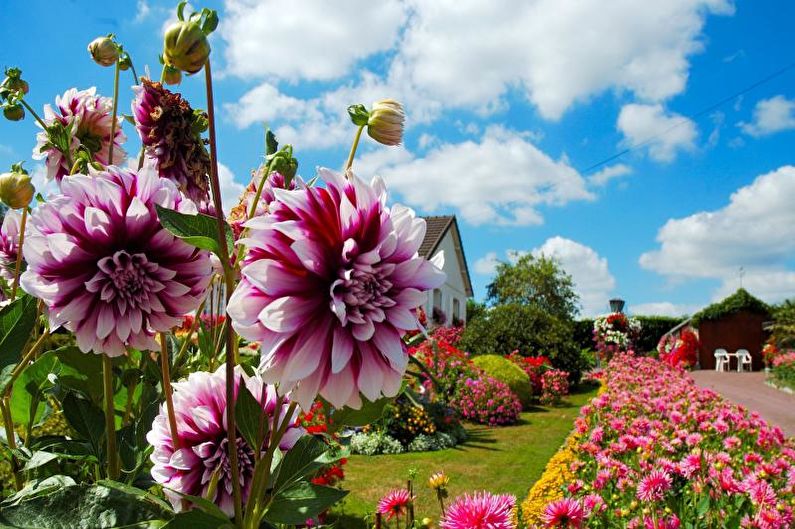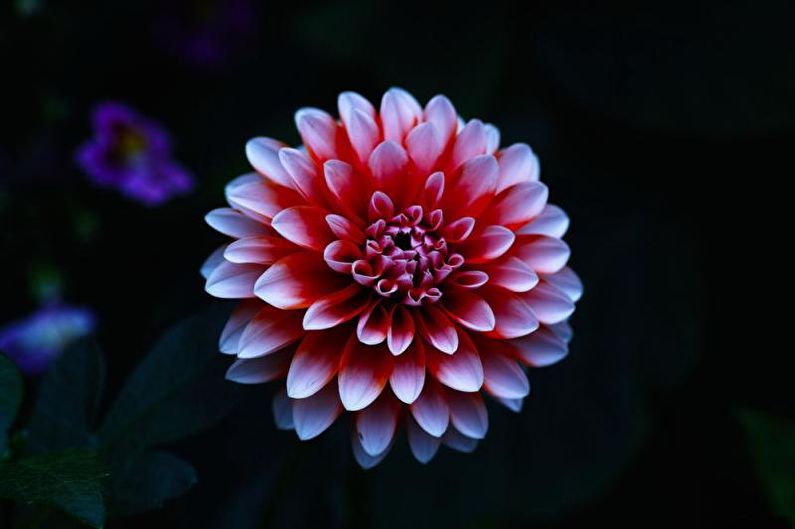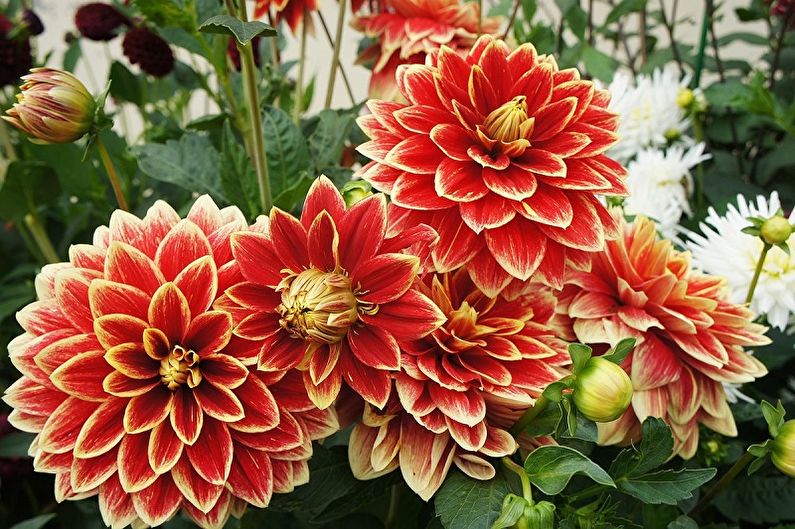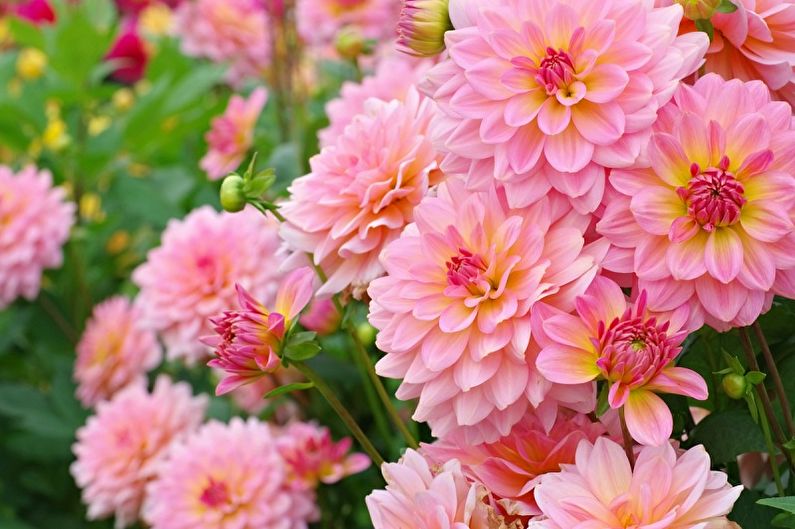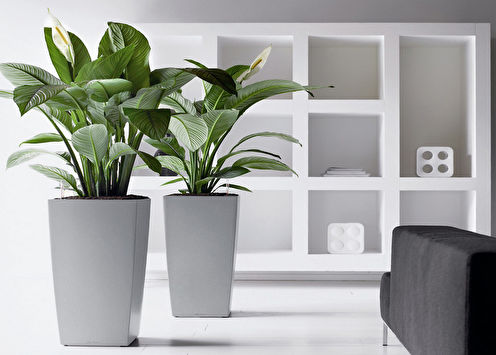
Dahlia - a well-known and very popular flower, is the fruit of long and painstaking efforts of breeders. Over the long years of selection and crossbreeding, it was possible to transform mountain flowers, found only in Chile or Mexico, into a real garden view, which was called cultural dahlia.
The main types of flower
At the moment, there are more than 15 thousand different varieties, presented in all kinds of colors and shapes, but the breeders have adopted a classification that shares a huge variety of only 11 major groups.
Simple dahlias
They are represented by shrubs of various sizes: dwarf - up to 25 cm, medium - from 25 to 30, tall - up to 50 cm. Petals are arranged in a row, which acts as a recognizable and distinctive feature of simple (or as they are also called non-double) dahlias.
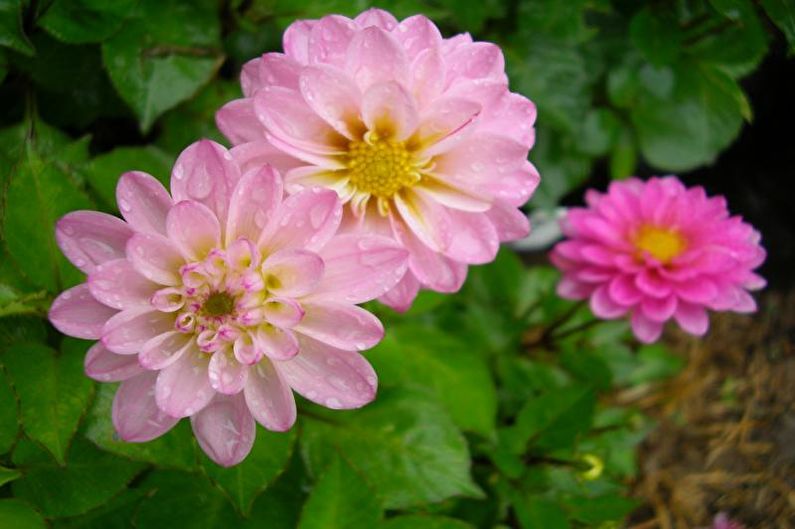
Anemone Dahlias
As you can see from the name, this group is similar to anemones. The main difference is terry. You can recognize them by the yellow and tubular core, as well as by petals located in several rows.
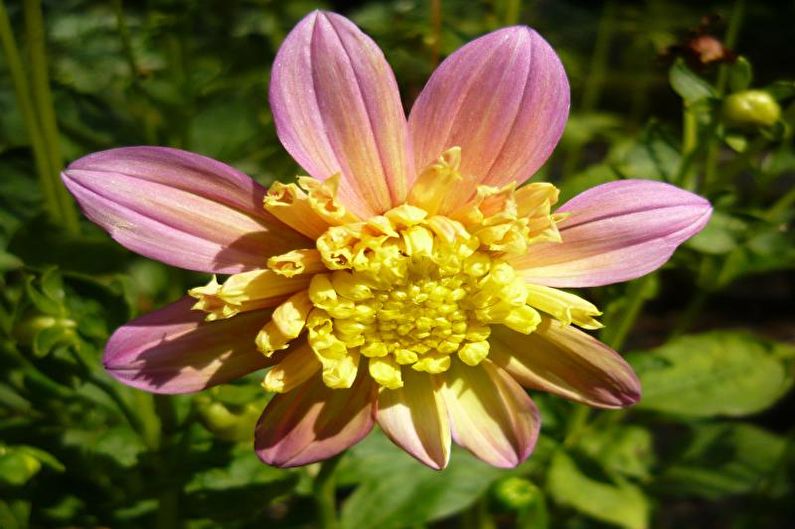
Collared Dahlia
They have fairly high bushes, from about 40 to 70 cm. Petals grow in a couple of rows, often of different sizes and colors. Their lower level is longer than the upper one - this feature will allow to identify this category. When choosing these types, pay attention to La Gioconda, First-grader or the Heart of Danko.

Peony Dahlias
The result of crossing dahlias and peonies. These are semi-double flowers that have several rows of petals and a bright yellow middle. Bright representatives of the variety: Danko, Aurora Volley or Eternal Flame - a favorite option for country flower beds.
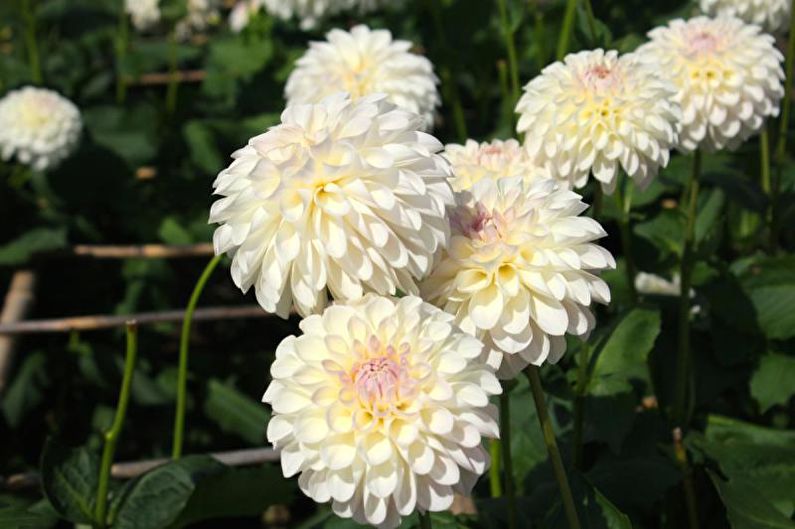
Decorative dahlias
Extremely popular and diverse group, which is represented by voluminous and lush flowers. There are both undersized - Ecstasy or Zingaro, and high varieties - Rosabela, Arabian night or Orange.
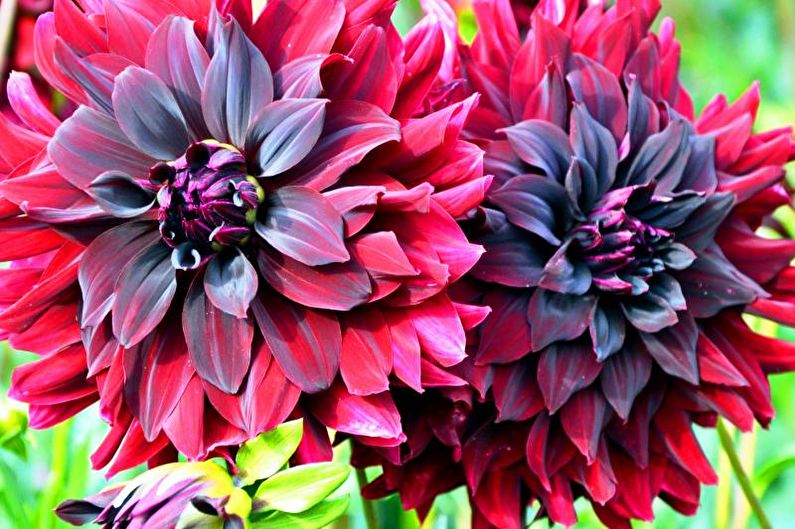
Spherical Dahlias
An interesting and diverse variety, presented in a wide palette of shades. Has double and round flowers. Low representatives of this species reach 40 cm, and high ones up to 1.5 m. Depending on the size of the plant, the diameter of the flowers varies from 7 to 20 cm. This group includes: Evelyn, Peter or Sandra.
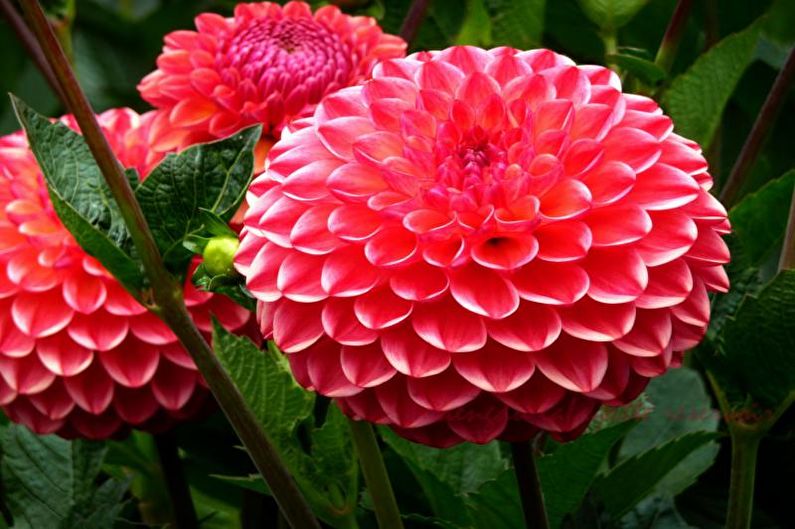
Pompom dahlias
Low pompom dahlias look great when planting in several rows, and larger ones allow you to create a stunning bouquet. They also have ball-shaped flowers, but they are flattened compared to the previous group. The height of the bushes can be from 50 to 120 cm. The pompoms grow to medium size, namely 4-10 cm.
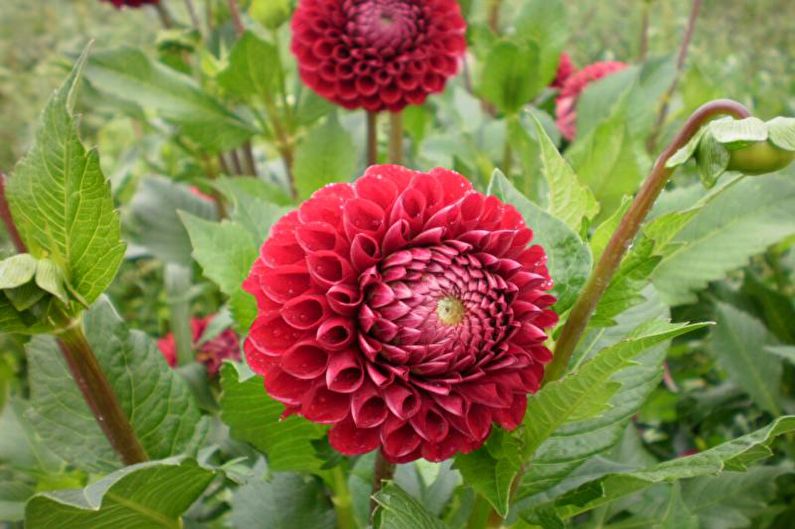
Cactus dahlias
They got their name thanks to the narrow and tubular colors that from afar look like thorns. Represented by a huge variety of shades and sizes of shrubs. Inflorescences in this group are from 6 to 35 cm, and bushes can reach a height of up to 2 m. Interesting and popular varieties: Black Wizard, Florida and Ambition.
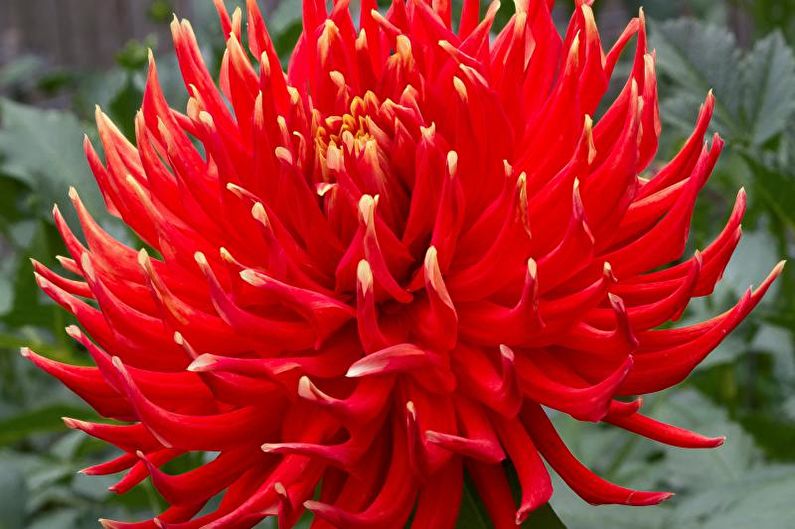
Half Cactus Dahlias
Breeders embodied in this group all the best features of cactus and decorative dahlias. A very popular and interesting variety that attracts more and more lovers of beautiful flower beds. Famous representatives of this category: Island Deline, Verda, Meteor, Wiki.
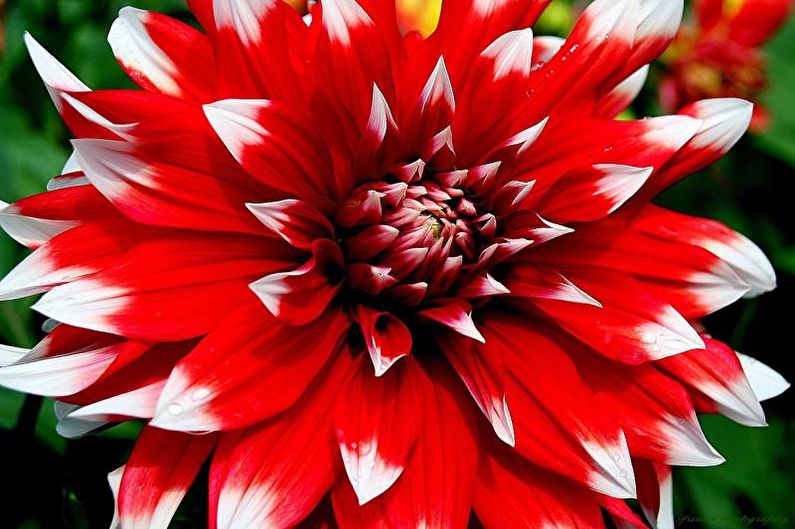
Nymphaeal Dahlias
Very beautiful and delicate terry flowers, which in shape are very much like water lilies. Famous representatives: Angora, Leo Gelito, Kens Flame, etc.
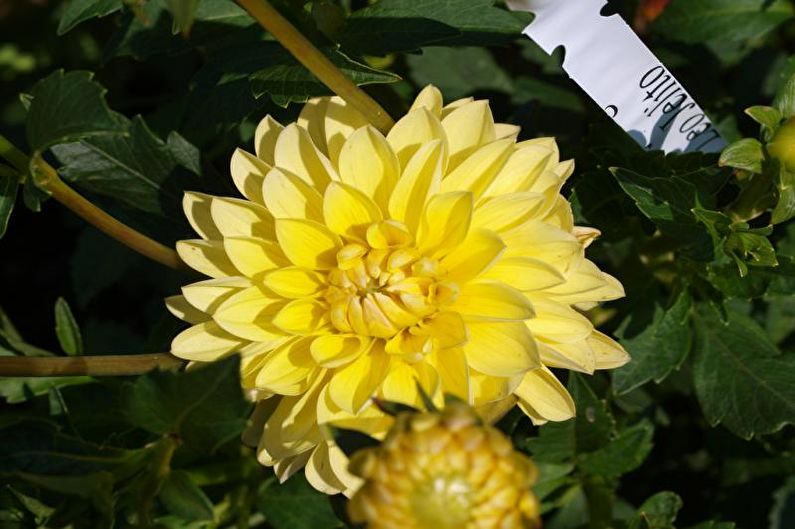
Mixed Dahlias
This group includes dahlias that, by their main criteria, do not fall into the listed varieties, or recently bred species without vivid similarities to existing categories.
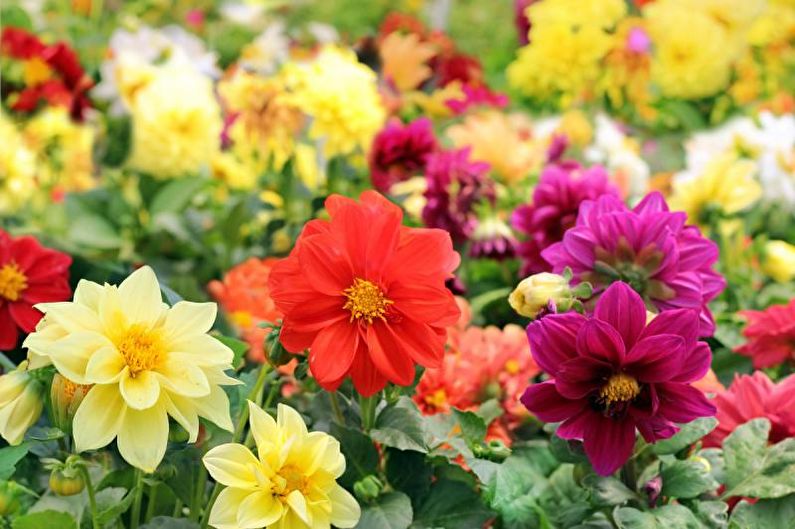
Bloom
The undoubted advantage of dahlia is its long flowering. It starts around the middle or end of the first summer month and lasts until the onset of cold weather and the first frost. That is why gardeners nicknamed them “the queens of autumn flower beds.”
So you can enjoy flowering as early as possible, start preparing tubers in advance. In the middle of spring, drop them into moist, but at the same time soil, poor in organic matter, for example, sand. After, place it in a greenhouse, a greenhouse or on a window in the house, but in May, transplant the rhizomes into the ground in a flower bed, where the flower will continue its life. Thanks to this simple approach, you will get blooming a month after planting.
To obtain larger inflorescences, it is recommended to leave only two or three main stems on the dahlia, and the rest should be removed in their infancy. This will allow you to get luxurious buds. From observations, the rule was derived that larger flowers grow on bushes that were driven out of young delenki. Carefully treat your planting material, carefully discard old tubers.
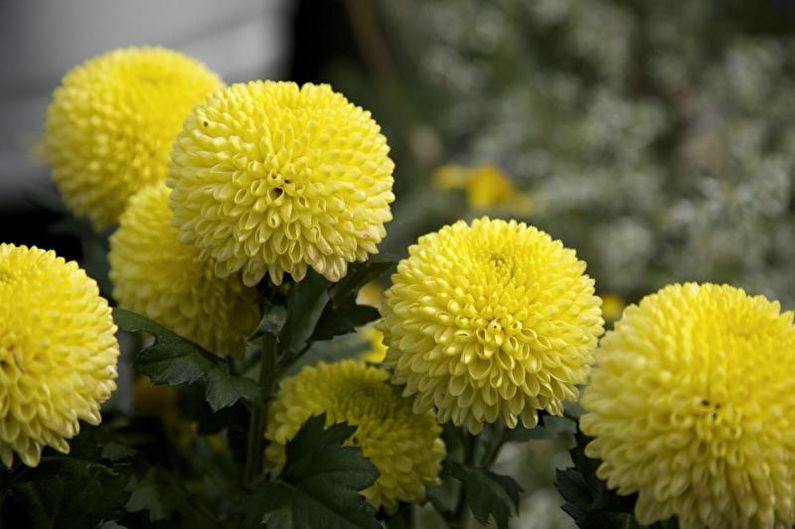
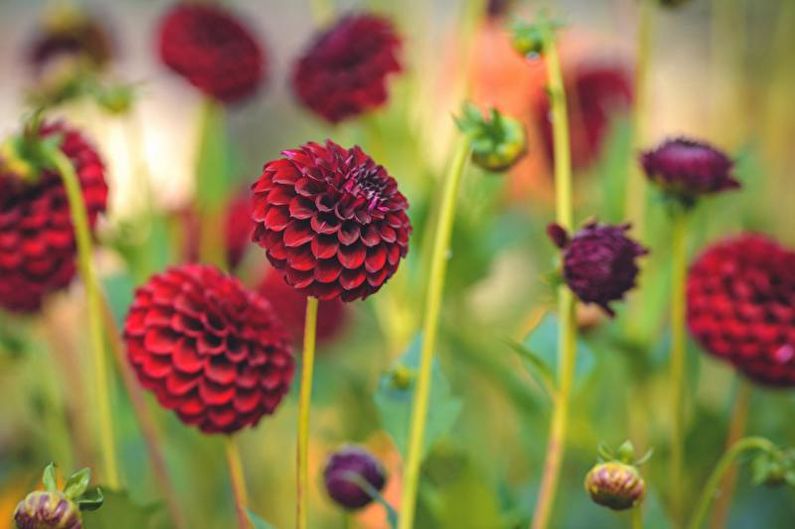
Breeding dahlia
In fact, the technique of growing and propagating dahlias is quite simple and does not require special knowledge or skills. You can use seeds or share tubers. Despite this, growing from seeds is a rather unpredictable activity, since you can get quite unexpected shapes and colors.
Based on this, the division of root tubers remains the best way. To obtain early flowering, seize them around March, then soak in a 0.15% potassium permanganate solution for half an hour. Next, carefully place them in a box of soil moistened with moisture, or place each of the tubers in different pots, leaving the neck open.
An acceptable temperature for growing is + 20 ... + 22C, and organize watering immediately after the land dries. It will not be superfluous to spray the plant a couple of times a day. After about two weeks, the eyes sprout, at which time the root tubers divide.
You can start planting dahlias around the twentieth of May, but at night they need to be tightly covered from frost.
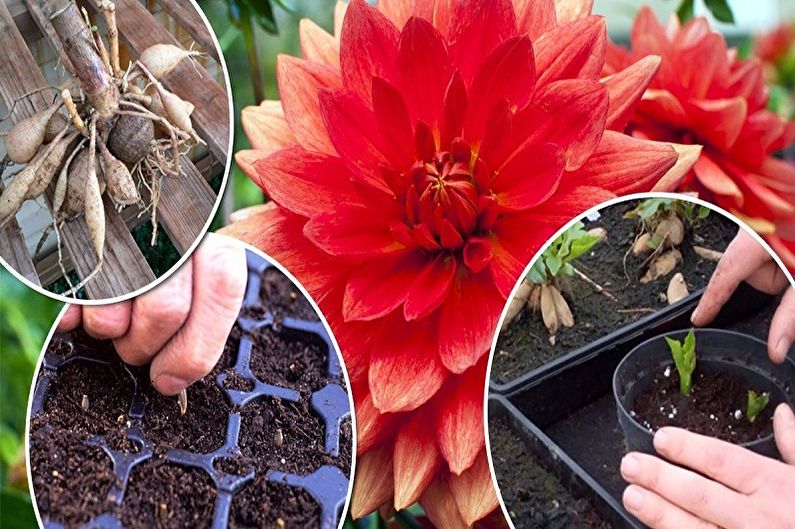
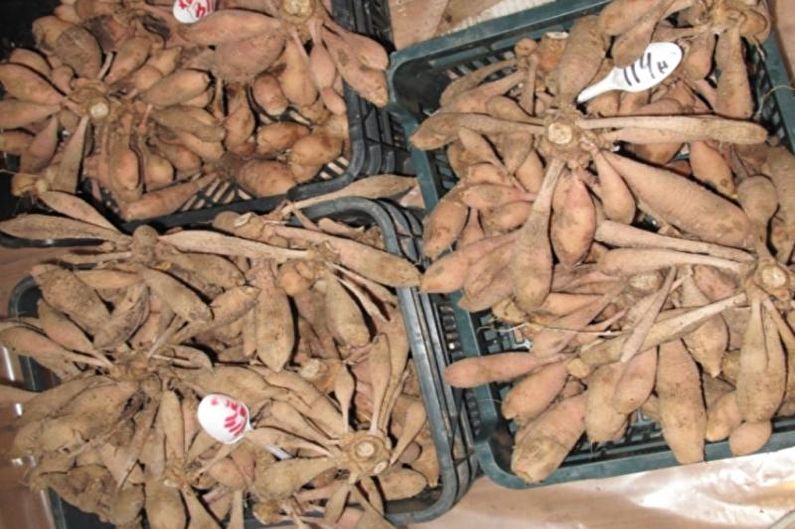
Dahlia Care
Dahlias are perennial and long-flowering plants that do not require particularly difficult care, but still you need to adhere to a number of rules and tricks.
Watering. For watering, it is enough to wet the ground about 20-30 cm only a couple of times a week. Based on specific weather conditions, for example, during hot periods without rains, watering needs to be increased or increased. Be careful and avoid stagnation of water, as this will lead to rotting of the roots.
Illumination. A dahlia needs at least six hours of daylight, since they came to us from warm countries. But, thanks to breeders, not only brightly lit, but also darker terrain is suitable for landing. They live well in the shade of larger plants, but this negatively affects flowering.
Temperature. Despite the rather good indicators of cold resistance, these flowers still can not winter in the ground in our climate. They feel great until the first frost, but for the winter they should be removed from the ground.
Fertilizers and top dressing. Fertilize dahlias with low nitrogen fertilizing, as nitrogen causes the bush to grow leaves, negatively affects flowering and creates very weak tubers. They dry or rot during storage. That is why experts recommend fertilizers with a sufficient content of phosphorus and potassium. Feed the plant once a month, and if it is planted in nutrient soil, then fertilizers are not necessary.In addition, if you overfeed the flower, then it forms very weak and unfit for reproduction tubers.
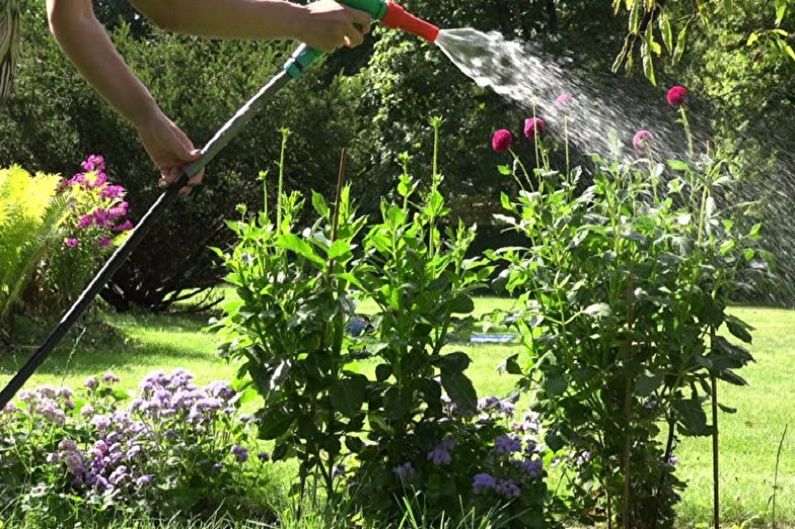
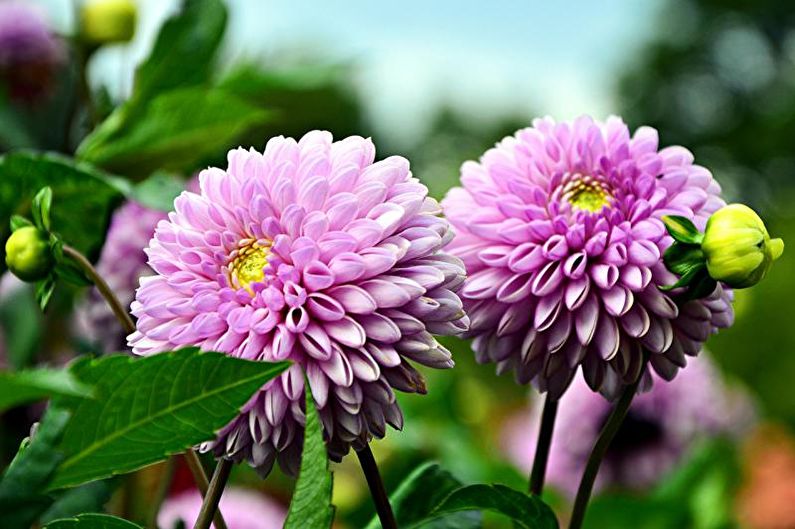
Disease and treatment
There are a number of diseases that you need to know about if you decide to decorate your garden with dahlias.
Powdery mildew is a fungal disease that is accompanied by a noticeable white coating that appears on the leaves. This occurs mainly from excessive moisture or when the soil is oversaturated with nitrogen. Contact infections are also common: through water for irrigation, by air from other plants. To save, you need to immediately remove the affected leaves and carry out a medical treatment using spraying.
Viral mosaic - identified by noticeable yellowing along the veins of leaves, as well as spots of different shades of green. To preserve the entire flower bed, it is necessary to reject and burn affected specimens or parts thereof.
Bacterial cancer - the easiest way to detect after digging a plant. It is detected by unnatural and ugly kidneys and growths on the roots, they reach about 10 cm. As in the previous case, the best solution would be the rejection and destruction of damaged roots.
In addition to these diseases, dahlias can be affected by various pests, such as slugs, flower beetles or aphids.
Destroy aphids using a sprayer with chlorophos, and also apply dusting of wet leaves with ash. Spraying with urea will help to cope with slobbery pennies, flower beetles or powdery mildew. Deeper can be collected manually or showered the next track with copper sulfate. To control pests, it is also advised to treat the leaves with a decoction of capsicum.

Dahlias - photo
We have prepared beautiful dahlia photos that will inspire you to settle this charming plant in your own garden! Enjoy watching!


